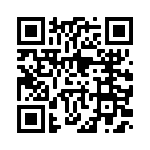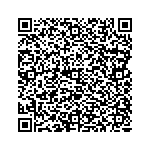4 Teaching Self-Regulation with Ms. Leah Kuypers
Ms. Leah Kuypers

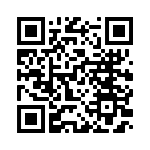 Ms. Leah Kuypers earned a Bachelor of Science degree in Occupational Therapy from the University of Wisconsin, Madison, a Graduate Certificate in Autism and a Master of Arts in Education from Hamline University in St. Paul, Minnesota. Leah created and write The Zones of Regulation (2010), a concept designed to teach regulation. In addition she has authored and co-authored regulation tool card decks, apps, storybooks and a game to complement The Zones of Regulation learning. She has practised as an occupational therapist and specialist in school and clinical settings specialising in regulation and social learning. She provides training and consultation to districts, professionals and caregivers on self-management and the Zones of Regulation programme around the world.
Ms. Leah Kuypers earned a Bachelor of Science degree in Occupational Therapy from the University of Wisconsin, Madison, a Graduate Certificate in Autism and a Master of Arts in Education from Hamline University in St. Paul, Minnesota. Leah created and write The Zones of Regulation (2010), a concept designed to teach regulation. In addition she has authored and co-authored regulation tool card decks, apps, storybooks and a game to complement The Zones of Regulation learning. She has practised as an occupational therapist and specialist in school and clinical settings specialising in regulation and social learning. She provides training and consultation to districts, professionals and caregivers on self-management and the Zones of Regulation programme around the world.
Learn more about Ms. Kuypers’s work by clicking or scanning the QR code.
Ms. Kuypers: As an occupational therapist working in schools, I saw a huge need to support students with their ability to self-regulate. I supported many students on my caseload who needed help with their sensory regulation. I was finding I would show up to a classroom, and the teacher would push a student out the door to me, saying, “he needs to calm down”. I would bring them to my sensorimotor room and get them to this just right level of arousal.
As I brought the student back, the teacher would say, “we’re five minutes into maths. Catch up to problem six”. This makes the student upset and dysregulated because they missed the first five minutes of maths. The teacher then looks at me with an expression of “now what are you going to do?”. I’m often left looking at the teacher like, “I’m not sure?”. Many of us at the school were unsure of what to do in these situations. This helplessness would often lead to a culture of relying excessively on punishment. If students couldn’t quickly comply with the demands from the teacher, they were escorted out of the classroom, or they exploded, and then there were punishment and consequences. There wasn’t any teaching on how to help the student have a more adaptive, prosocial response to stressors in the school environment.
When I was getting my Master’s in Education and a Graduate Certificate in Autism, it was through the coursework and applying the coursework to my caseload that I started thinking, “how can we do this differently?”, “how can we look beyond teaching a student a lesson to truly teaching them a self-regulation lesson?”.
Self-Regulation & Emotional Control
Dr. Krishnamoorthy: How do you explain the idea of self-regulation to teachers?
Ms. Kuypers: Self-regulation is an umbrella term that covers other groups of complex skills like self-discipline, self-control, anger management, and emotional control. It also includes regulating our level of arousal or alertness. For example, some of us immediately wake up to the alarm and hit snooze. This shows a very low level of arousal or alertness. Some of us are startled by the alarm, which is a heightened arousal level. And some of us lie in bed, thinking about our day and planning. That’s just a more grounded, organised level of arousal or alertness.
We need to constantly adjust this level of arousal and how we reveal our emotions. We need to do this in a way that’s adaptive to the social context and in relation to the goals or the tasks we’re trying to achieve in the environment. For many students, those goals or tasks are just getting through the work and moving on in their daily schedule. It often includes having fun, pleasing parents and teachers, and having friends to eat lunch with and play with. We make many adjustments to how we express those innate emotions and manage that level of arousal to move more smoothly through our day.
Dr. Krishnamoorthy: It almost seems foundational to manage our arousal and emotional expression before we can do any higher-level cognitive learning.
Ms. Kuypers: It’s such a foundational skill, and you’re not going to be in a place for learning and taking on that challenge of academics, turning that information into knowledge if you’re not in this calm, regulated, grounded stateyou’re not going to be in a place for learning and taking on that challenge of academics, turning that information into knowledge if you’re not in this calm, regulated, grounded state. I see an increasing number of schools understanding the value of this and wanting their students to achieve high-level academic scores. They’re putting the work in and building the self-regulation skill set to give their students success. The research is backing this up too. It’s been exciting to see the pendulum swinging and more research showing the value of self-regulation.
![]() Self-Regulation: The Fundamentals
Self-Regulation: The Fundamentals
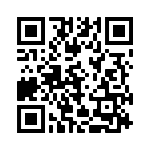 We depend on executive functions and emotion management daily—did you know these skills can be taught? Research shows that students with better self-regulation skills have higher academic achievement, are more likely to get along with others, and are better able to build and maintain strong relationships. Learn more by watching this brief video from the Committee for Children [2.22]. Click or scan the QR code to start watching.
We depend on executive functions and emotion management daily—did you know these skills can be taught? Research shows that students with better self-regulation skills have higher academic achievement, are more likely to get along with others, and are better able to build and maintain strong relationships. Learn more by watching this brief video from the Committee for Children [2.22]. Click or scan the QR code to start watching.
Dr. Krishnamoorthy: When did you realise that sensory regulation strategies were effective and made a difference to students?
Ms. Kuypers: I had a kindergarten student who came from a home environment where he had a parent who was incarcerated. He was raised by a single mother and had a brother with a disability. We knew there were illicit drugs in the home, and he had a cognitive impairment. We worked on making a routine and helping the family understand his emotions first.
As we were working through and using the Zones of Regulation framework with him, he put his picture into the red zone to show he was in this heightened state of arousal. The red zone is where emotions are at their max. He then put himself into a time-out, and that wasn’t something we were teaching with the red zone. This was an ‘aha’ moment when I saw a student who could barely go through the ABCs or spell his name but could recognise his emotional state. He could recognise he was furious at that moment. What typically happened when he’s angry is he ended up in time-out. So he let us know he was in that heightened state and put himself in time-out. We wrote a different ending to this routine teaching him red zone tools he could use instead of timeout, like deep breathing and taking a break.
I began noticing that students have this ‘little bit of control when they’re in that super heightened state and the red zone. With that little bit of control evident, we could help these students diverge from, or change, their typical expression of those heightened statesWith that little bit of control evident, we could help these students diverge from, or change, their typical expression of those heightened states.. In that heightened state, their expression may be running, fleeing out of a building, aggressive, destroying something, or whatever disruptive behaviour is protective for the child. We can teach them to recognise when they’re in that heightened state and that they can have a different ending or outcome. They can have a calm, quiet place, but they don’t associate anything punitive with the heightened state. When we reduce the shame of being heightened, children can learn helpful, effective strategies to manage.
By the end of the year, this student would identify he was in the red zone and participate in yoga independently at his spot. This student had been previously going into a time-out, out of the classroom. He’d had behaviour reports for disruptive and aggressive behaviour. Sometimes his behaviour led to a locked seclusion situation. He was going to time-out multiple times a day. After the intervention, he was sent to time-out perhaps once a week, if that. He was also doing yoga instead. That was a pivotal place where I thought, “okay, I think this has something of value.”
![]() Self-Regulation Strategies: Feel Your Best Self
Self-Regulation Strategies: Feel Your Best Self
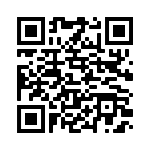 Feel Your Best Self (FYBS) is a unique partnership between the Collaboratory on School and Child Health (CSCH) and the Ballard Institute and Museum of Puppetry at the University of Connecticut. The collaboration was initiated during the COVID-19 pandemic to address the emotional challenges schools, children, and their caregivers faced. Pairing collective expertise in educational psychology and puppetry, the team designed fun, engaging ways to learn simple strategies to calm yourself, catch your feelings, and connect with others. The initial response was overwhelmingly positive, with the project evolving synergistically into the complete FYBS toolkit.
Feel Your Best Self (FYBS) is a unique partnership between the Collaboratory on School and Child Health (CSCH) and the Ballard Institute and Museum of Puppetry at the University of Connecticut. The collaboration was initiated during the COVID-19 pandemic to address the emotional challenges schools, children, and their caregivers faced. Pairing collective expertise in educational psychology and puppetry, the team designed fun, engaging ways to learn simple strategies to calm yourself, catch your feelings, and connect with others. The initial response was overwhelmingly positive, with the project evolving synergistically into the complete FYBS toolkit.
Click or scan the QR code to access all the free FYBS resources.
Zones of Regulation
Ms. Kuypers: The Zones of Regulation is a framework for thinking, and it comes packaged up in a curriculum. This is a systematic approach to classifying all the different feelings and states, levels of arousal, and energy.
The curriculum has four zones that help us make this abstract, emotional world more systematic. Essentially what we’re feeling inside, we’re giving or assigning to a zone. Once we can recognise our emotions and the corresponding zone, we can identify tools that support regulating that zone.
The red zone is that very heightened level of arousal, those intense, overwhelming emotions. Sometimes red zone emotions can be positive but intense like when we’re elated our sports team won the state championship, it’s a big, exuberant experience.
The yellow zone is elevated emotions. Emotions have intensified, but there’s some cognitive control in the yellow zone. Some feelings in this zone might be worried, silly, excited, wiggly, irritated, or overwhelmed.
The green zone is when we’re more controlled, an organised state where we might be happy, calm, and focused.
Then there’s the blue zone. The blue zone is the lower arousal levels, those down, feelings like sad, sick, tired, or bored.
This systematic approach to emotional awareness and regulation gives a visual structure and helps ease communication. As part of the curriculum, we learn about our emotions, and we talk about what zone it falls into. Then when we do get in those less regulated states, we can point to the zone we’re in or use the colour to identify the zone and efficiently communicate our emotions to others. This allows the adults to co-regulate with the student and support them in finding the tools that help regulate that emotion.

![]() The Zones of Regulation: Free Resources
The Zones of Regulation: Free Resources
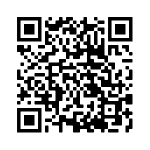 The Zones of Regulation provides a common language and compassionate framework to support positive mental health and skill development for all while serving as an inclusion strategy for neurodiverse learners, those who have experienced trauma, and have specific needs in terms of social, emotional, and behavioural development. Click or scan the QR code to access the free resources from the Zones of Regulation website.
The Zones of Regulation provides a common language and compassionate framework to support positive mental health and skill development for all while serving as an inclusion strategy for neurodiverse learners, those who have experienced trauma, and have specific needs in terms of social, emotional, and behavioural development. Click or scan the QR code to access the free resources from the Zones of Regulation website.Dr. Krishnamoorthy: What’s good about the zones is that it’s a helpful tool for all students. It covers the spectrum of students without singling out just the challenging students.
Ms. Kuypers: We all work on emotional regulation all the time. Emotional regulation is an ongoing life skill for all of usEmotional regulation is an ongoing life skill for all of us.. There’s not an adult among us who doesn’t have some reflection after they’ve been dysregulated and thought, “that didn’t work out so well for me. I need to work on that.” The reality is that we get stressed and overwhelmed as adults. We get angered and worried and don’t always manage those emotions as well as we want to.
The zones are something that I initially designed for my students who had special needs – those with neural biological impairments. I think the reach is far beyond just those students, though, because all students are learning this, and many adults are using it. I find many adults familiar with the framework talk in the colours of the zones to their colleagues. They’ll say, “I’m in the yellow right now” or “oh, I was getting close to the red zone” it’s just simple language, and it’s a way to co-regulate even as adults.
Key Strategies
Ms. Kuypers: The programme works a lot at helping students build emotional awareness in a very user-friendly way. I find the colours and language around the zones make it tangible for people to implement, use and adapt to their cognitive style. There are four colours, and many students find it simple and easy to grasp. Teachers, therapists, and parents also use it as it feels approachable for them.
We’re not going to be able to use a tool to regulate ourselves if we don’t first have the awareness that we’re in a less regulated state. A lot goes into building that self-awareness and recognising when we’re dysregulated and moving into a different zone.
It intends to help students understand that all these emotions are human nature and that we will experience these different emotions. Another positive is that the zones are intended to be used without judgement. There’s no shaming, no penalties associated with one zone or another, and it’s not a behavioural approach where you get points if you stay in this zone or lose points in that zone. It intends to help students understand that all these emotions are human nature and that we will experience these different emotions. Therefore, we share all these different zones are okay. It’s our job to work on recognising our zone or feelings and find healthy ways to manage them.
Barriers to Implementation
Dr. Krishnamoorthy: What barriers have you come across for the teachers and the schools when they attempt to adopt a framework like this?
Ms. Kuypers: Teachers have so much on their plate already, and they have increased pressure to have high-performing test scores from their students that it can feel like this is one more thing they must be doing. If teachers set aside a little time upfront each day to teach, the zones can then just be embedded into the conversations in the classroom. This helps remove the added pressure of it being something extra to teach.
The zones framework helps stressed teachers manage their classrooms as it gives a visual structure to support the students learning. Teachers can overlay the zones in their academic instructions. Students can use the characters they’re reading about, and discuss what zone they may fall in, and what tools would help them move between the zones. Also, if they’re teaching written expression, they could choose a topic on the zones and have the students do their written expression around that topic.
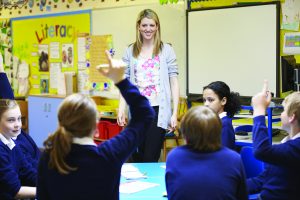
The zones framework offers teachers a way to build student self-regulation, which helps move that burden away from the teacher’s shoulders. The students can build responsibility in their self-regulation in a non-punitive and non-shaming way. It does take some time upfront to put the framework in place in the classroom, including displaying visuals. Allowing routine time to practise the tools, just five minutes from your daily schedule, means you will spend much less time managing student conflicts in the classroom as the students can regulate themselves. Teachers can then use the zone’s framework to support their students in doing more self-regulation versus teacher-imposed regulation.
Dr. Krishnamoorthy: A common dilemma we’ve likely encountered is where teachers feel students with lots of difficulties get a lot of extra support – while other students miss out. Some teachers find that hard to keep things fair with the other students who don’t require as much support.
Ms. Kuypers: The zones framework tries to support kids in finding individualised tools that work for them. Each student has many opportunities for individualising tools within the framework because we want the students to be empowered to use those tools. I often found myself saying, you need to take a break, you need to calm down because I thought that was what the student needed. That only worked about half the time, though. Instead, I learned the students needed to build that self-awareness of what they needed and what worked for them. That said, some students’ tools may involve a little more than others. They might need more time with their tool or more resources for their strategy to succeed. I also find that the tools we initially work for a student are often only a starting point. We can still stretch those students to be working towards finding more adaptive strategies that are less disruptive to the classroom or their learning.
For example, taking a break and using a calming corner is a tool. This is much less disruptive than lashing out at another student or destroying property in a school environment. It’s a step in the right direction. We also want students at their desks learning. Our aim over time might be to stretch that student to get to where he can just put his head down to regulate rather than leave his desk. To go from a student destroying a classroom to putting their head down to regulate is sometimes too big of a leap at once. So we’ve got to work towards that incrementally. It can be encouraging for some teachers to see that when we weigh our options up, taking a break in a calming space, albeit slightly disruptive, is much better than destroying a classroom.
![]() Social-Emotional Learning and Differentiation
Social-Emotional Learning and Differentiation
The 2016 Daryl Dugas article, ‘Group Dynamics and Individual Roles: A Differentiated Approach to Social-Emotional Learning’, describes a differentiated classroom management approach based on group dynamics that focuses on developing group norms and roles. By teaching students about the task and social-emotional roles and positive and negative roles, this approach provides venues for constructively talking about student misbehaviours. You may be able to access this article through your library.
Inclusive Classrooms
Ms. Kuypers: Part of what we’re teaching with the Zones framework is all the Zones are okay and we use tools to help us regulate it. Although in the green zone we’re calm and regulated, we also have tools to support our green zone. These tools can help maintain the organised sensory state associated with the green zone. Often they are proactive strategies rather than waiting until we’ve moved into the yellow, red, or blue zones.
What can we be doing to support that student in their green zone to keep them in a more regulated state for longer rather than wait until they’re dysregulated? Can we find some green zone tools to support their sensory needs in the classroom so they can be engaged in the learning while supporting what they need to stay regulated?
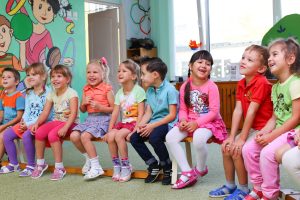
The zones are also a proactive approach to regulation rather than a reactive approach. As students get older, they’ll be at the helm of their self-regulation. They must gain that emotional regulation skill set, so it’s not just us adults in the background trying to be the puppet master and have everything lined up so we can keep them in a regulated state.
Data Collection
Dr. Krishnamoorthy: How do you collect data or check to see if interventions are effective within the zones curriculum?
Ms. Kuypers: There is a self-regulation checklist that a parent can fill out pre- and post-interventions. There’s also a student self-assessment that the students can complete too. In the book itself, there are a lot of opportunities for the students to be compiling data as they’re self-monitoring. By reviewing that self-monitoring data, we want to see if their day has become more regulated, if they’ve increased their repertoire of tools, or if they’re using their tools more frequently. By doing this, we can see if the intervention for the student is effective. Data recording is embedded into the lessons because self-regulation is a complex skill to measure.
Research shows there isn’t an all-encompassing self-regulation tool available and that often we’re measuring sub-skills of self-regulation. We can look at executive functioning, sensory processing, modulation and social cognition, which are all related to the ability to self-regulate.it’s valuable to have the student self-monitoring and self-reporting the effectiveness of interventions when possible A standardised tool can measure deficits in those areas and determine how they retest over time. Still, it’s hard to do when observing self-regulation to see what a child is thinking and what’s happening inside. The students are often harder on themselves than I am when reporting on their self-regulation. For that reason, it’s valuable to have the student self-monitoring and self-reporting the effectiveness of interventions when possible.
![]() Using Data to Support Students
Using Data to Support Students
Dr. Krishnamoorthy: You mentioned giving measures to parents to complete. Have you had any experience with this from a school context and involving parents in the process?
Ms. Kuypers: Its important students don’t go home just talking about colours as parents have no insight into the programme. They might ask their kids, “what do you mean you’re in the red zone”? In the book, there are reproducible’s, and there’s a page for parents explaining the programme. A one-page visual can also be sent home for parents to display. There’s also a glossary that can be sent home for parents to understand the terminology of the programme so they can support their kids with the zones too. I encourage schools to have a parent training night to welcome parents and give some information on the zones programme and what to expect.
Two apps can be used with the programme, which will help engage the students in the zones and help the parents understand what it’s all about. One app is called the ‘Zones of Regulation’, and the other is called ‘Exploring Emotions’. The apps are an excellent way to bridge the divide between school and home and help parents understand what the schools are working on. Then, as students work through the curriculum, we ensure we send home the work they’re putting together so that it can continue to be compiled and extended at home.
Individual Progress
Dr. Krishnamoorthy: What’s your general advice to teachers with students for whom the strategies don’t work immediately or as quickly as other students?
Ms. Kuypers: Self-regulation is a developmental skill, like learning to walk and talk. Hence, we must be mindful that many of our students will not be developmentally ready to jump from where they are to where you desire them to be quick. These students might be 10 to 15 years old chronologically. Still, developmentally, their self-regulation skills are that of a four-year-old. Because of that, they’re not going to make that leap in progress in half a year like other students with more neurotypical self-regulation developement.
Rather than working through a new lesson each week, we need to look at each student and see where they are in the curriculum. Do they need more time for the development of a particular skill? Are they demonstrating that knowledge? A lot of our students can spout or talk about that knowledge, they describe about the zones upside down and backward, but are they demonstrating those skills that we’re trying to teach? If a student isn’t showing a skill, to layer on another skill before they’ve mastered the original skill indicates we are moving too fast, and that student may become resistant. I encourage people to slow down and pace the instruction based on where the student’s skills are. We can ask ourselves, “what are they absorbing and starting to demonstrate?” “What do we see emerging?” That should give us the clues that they’re ready to add more to this and extend it another step. It’s important to acknowledge that this takes time. There is a lot of effort, and teaching needs to be placed up front when the students are calm and regulated. This will lead to a payoff down the road when students become dysregulated. I caution people to think if you introduce this (The Zones), you will see the effects immediately. Rather, it takes time, practice and repetition to see results. Many students need more intense support and to go at a slow and steady pace to be successful.
Chapter Summary
- The Zones of Regulation is a systematic approach to classifying different feelings, emotional states and levels of arousal.
- There are four Zones of Regulation:
- Green zone – controlled, organised, calm, regulated, focused
- Yellow zone – elevated, still have some cognitive control, worries, silly, wiggly, irritated
- Red zone – very heightened, intense, overwhelming emotions, angry, elated
- Blue zone – down, sad, tired, sick, bored.
- Emotional regulation is an ongoing life skill for children and adults.
- The zones framework bridges the gap between school and home to provide a consistent approach to emotional regulation.
![]() Listen to the full interview on the Trauma Informed Education Podcast
Listen to the full interview on the Trauma Informed Education Podcast
References
Committee for Children. (2016). Self-regulation skills: Why they are fundamental [Video]. YouTube. https://www.youtube.com/watch?v=m4UGDaCgo_s
Dugas, D. (2017). Group dynamics and individual roles: A differentiated approach to social-emotional learning. The Clearing House: A Journal of Educational Strategies, Issues and Ideas, 90(2), 41-47.
Edutopia. (2019). Using data to support teacher and student growth [Video]. YouTube. https://www.youtube.com/watch?v=PhMkqjbiSaA
Krishnamoorthy, G. (Host). (2017, May 29). Teaching self-regulation with Leah Kuypers (Episode 27) [Audio podcast episode]. In Trauma Informed Education. Sound cloud. https://soundcloud.com/trauma-informed-education/teaching-self-regulation-with-leah-kuypers?in=trauma-informed-education/sets/expert-interviews&si=0ac5ad7448014543b2b3e6fbf32a531d&utm_source=clipboard&utm_medium=text&utm_campaign=social_sharing
Kuypers, L. (2021). The zones of regulation. https://www.zonesofregulation.com/learn-more-about-the-zones.html
University of Connecticut. (n.d.). Feel your best self. https://feelyourbestself.collaboration.uconn.edu/

